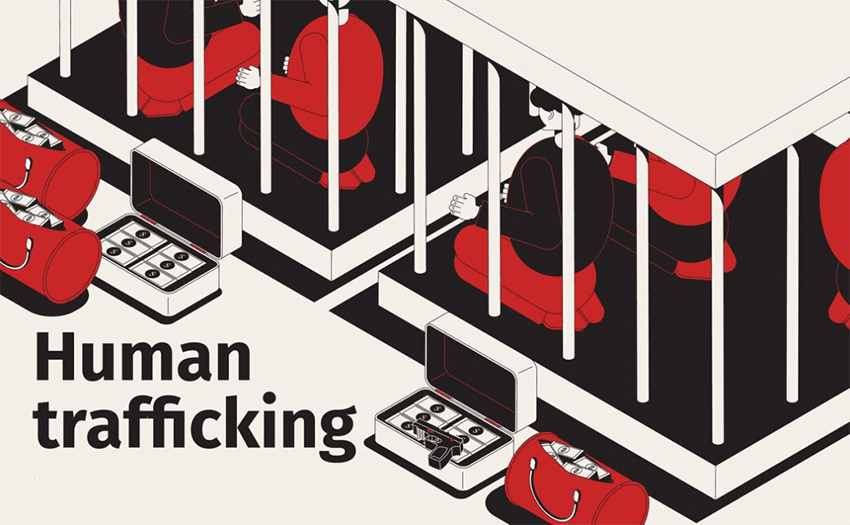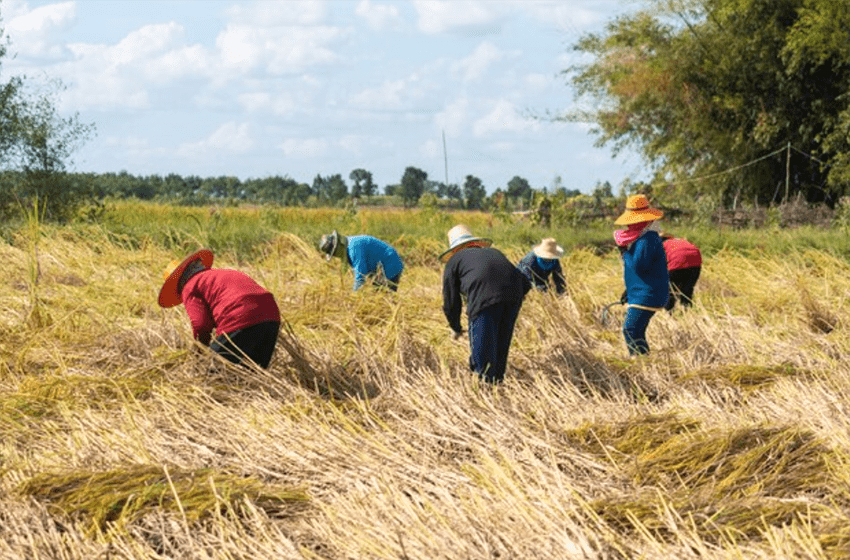What is human exploitation?
“People were created to be loved. Things were created to be used. The reason why the world is in chaos is because things are being loved and people are being used.”
Dalai Lama XIV
In today’s society, using other people as if they were things has become normalised. Exploitation occurs when a person or a group finds another person, usually vulnerable and isolated, to use them for their own advantage. In many cases, exploitation often negatively impacts the person or groups of people, leading to harm, abuse of rights, or disadvantage.
In fact, if they cannot easily exploit the person, the groups will monitor, stalk, bully, harass, and lie to force compliance from that individual. Furthermore, the group will do their best to manipulate and break that one individual so that the group can then reap personal gain, whether it be favours or monetary rewards.
Indeed, the idea of using, manipulating, forcing, or lying to someone—or about someone—so that those doing the exploiting can benefit while the vulnerable suffer is a hideous and abhorrent act. For a truly thrivable world to exist, there must be an end to exploitation in all forms. Together, we must do better.

Source: Freepik.
What is Human exploitation?
Let’s delve deeper into human exploitation. Exploitation encompasses the act of taking advantage of another person’s vulnerability, often through manipulation, coercion, or force, to gain benefits at their expense. In fact, this can occur in various forms, such as economic exploitation (underpaying workers), sexual exploitation (human trafficking or prostitution), or social exploitation (abuse of power or privilege). Furthermore, it involves disregarding the well-being and rights of the exploited individual, leading to their physical, emotional, or financial harm. As a result, these unfair practices violate human rights, emphasising the importance of awareness, laws, and ethics to stop exploitation in its various forms.
Human Trafficking
The Forms Of Human Exploitation
There are many forms of human trafficking when we speak about human exploitation. It is exploitation in its vilest manifestation.
Human trafficking takes many forms:
- Sex trafficking, sexual slavery, and commercial sexual exploitation. Traffickers force people into sexual exploitation, resembling modern slavery, where victims endure non-consensual sexual acts. Also, it can take the form of a man, woman, or group forcing the victim into commercial acts of sex. In this case, the victim receives no or minimal compensation, and the criminals take the gains.
- Trafficking of children. Child trafficking involves illegally trading children, forcing them into labour or exploitation, and exposing them to abuse and harm in various forms.
- Forced labour. Individuals endure forced labour when perpetrators coerce or threaten them into working against their will, often subjecting them to degrading conditions without proper remuneration or rights.
- Forced marriage. Families or individuals compel someone to marry against their will, causing serious emotional and physical consequences for the person involved.
- Organ trafficking. Criminals illegally trade organs, taken from living or deceased individuals, and transplant them into paying patients, often exploiting vulnerable donors or victims.
Human Exploitation And Its Manifestation:
Three things need to occur before the system recognises a situation as human trafficking. In fact, the National Human Trafficking Hotline states that fulfilling action, means, and purpose is necessary. However, people often cannot supply the hard evidence necessary for conviction in such cases.
First comes action. Indeed, the action involves the criminals inducing, recruiting, harbouring, transporting, providing, or obtaining the victim. Next comes the means used to acquire the victim, such as force, fraud, or coercion. Finally, they must establish the purpose. In other words, the motivation or aim of the crime, like sex or labour trafficking.
The Symptoms Of Human Exploitation:
Like a disease, human trafficking has symptoms. Also, like a disease, the virus is those engaged in human trafficking. Some of the more obvious symptoms are as follows:
“Living with employer.
Poor living conditions.
Multiple people in cramped space.
Inability to speak to individual alone.
Answers appear to be scripted and rehearsed.
Employer is holding identity documents.
Signs of physical abuse.
Submissive or fearful.
Unpaid or paid very little.
Under 18 and in prostitution.”
US Department of State
However, these are not the only symptoms. In fact, many men and women engaged in prostitution over the age of 18 may likely be victims of human trafficking; nevertheless, clever manipulation can keep them unaware of their true situation.
Why is it essential that we focus on the meaning of exploitation?
Focusing on human exploitation is crucial as it helps us recognise unfair practices, empathise with victims, and create effective ways to prevent and stop them, ensuring the safety and rights of vulnerable individuals. Accordingly, for you to step up and fight for justice, there are several actions you can take. Furthermore, you can combat human trafficking by spreading awareness, supporting anti-trafficking groups, advocating for better laws, educating communities, and encouraging collaboration between governments, NGOs, and businesses to help survivors and prevent this crime.
Remember, if you see something, say something. Don’t be a silent witness and an enabler. You’re a better person than that. Can you imagine how good it would feel to have the gratitude of one single victim of human trafficking for releasing them from that trauma? I imagine it would feel awesome.
moving forward

Source: Freepik.
Achieving the United Nations Sustainable Development Goals (SDGs) and how they link to Human exploitation
“The 2030 Agenda for Sustainable Development, adopted by all United Nations Member States in 2015, provides a shared blueprint for peace and prosperity for people and the planet, now and into the future. At its heart are the 17 Sustainable Development Goals (SDGs), which are an urgent call for action by all countries – developed and developing – in a global partnership.”
United Nations
Human trafficking is connected to multiple Sustainable Development Goals. In fact, it affects gender equality (SDG 5), decent work (SDG 8), reduced inequalities (SDG 10), peace, justice, and strong institutions (SDG 16), and partnerships (SDG 17). Women and girls are particularly vulnerable, thus making gender equality crucial. Forced labour calls for better working conditions, and trafficking worsens social and economic disparities, highlighting the need to reduce inequalities. Strengthening legal systems and international cooperation is vital for justice. Finally, collaboration between governments, organisations, and communities is essential for progress. Addressing these goals collectively can create a fairer and more just world.
A Thrivable Framework
Systemic Holistic Model
THRIVE stands for The Holistic Regenerative Innovative Value Entity. It forms the basis for the THRIVE Framework, and is a transdisciplinary, holistic modelling system. We can model likely outcomes of actions well before they occur. The purpose of the THRIVE Framework is to help measure the potential of initiatives taken today to help transform society towards a ‘better than sustainable’ future.
12 Foundational Focus Factors (FFFs) underpin the THRIVE Framework. These 12 FFFs are theories and guidelines that can steer humanity; navigating and charting ways of living and working through crises, natural disasters and climate change.
Complex Wicked Problems
Complex, wicked problems is one of THRIVE’s 12 FFFs. Human trafficking intertwines with complex issues like social, economic, legal, and cultural factors, making it deeply connected to wicked problems. Moreover, it’s not just one issue; rather, it connects to poverty, gender inequality, corruption, and lack of education. To tackle it, we need comprehensive solutions and teamwork across different areas to address these intertwined challenges effectively.
Thrivability
THRIVE invests interest in issues fundamental to the integrity of our society. Without this investment, humanity will barely survive, much less thrive. In fact, just like our name, we not only want to thrive, but enable others to also do so. Furthermore, thrivability means thriving and flourishing while living harmoniously with our environment, focusing on sustainable practices and overall well-being.
The Logo
THRIVE’s logo, represented by a ciambella chart, highlights two crucial boundaries for humanity: a social floor indicating the minimum for survival and an environmental ceiling, signifying the limit of resources taken from the environment. When someone exploits another person, the exploited individual falls below the social boundary. This isn’t good enough. When humanity breaches one of these boundaries, there is no thriving.
If you found this article information and beneficial to yourself or someone else, please visit our website. For more topics, we have a blog with new articles every week. Furthermore, we also have a regular podcast and a comprehensive YouTube channel. Finally, you can sign up for our newsletter or interact with us during our webinar on topics important to you during the Q&A session.
